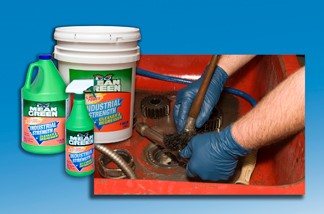
NYSDEC revised the current 6 NYCRR Part 226 into two parts, “Solvent Cleaning Processes” and “Industrial Cleaning Solvents”, and made changes to Part 201, ‘Permits and Registrations’.
Now, rules apply to the cleaning of all materials, not just metal, and changed the current ‘cold cleaning’ requirement of using a solvent. No changes are being proposed for open top vapor or conveyorized degreasing cleaning processes.
Effective Date?
Part 226-1 Solvent Cleaning Processes
- Metal objects, November 1, 2019
- Non-metal objects, after December 1, 2020
Part 226-2 Industrial Cleaning Solvents
- New facilities, upon start-up, from November 1, 2019
- Existing facilities, November 1, 2020
- or within one year of reaching the applicability criteria of emitting three tons or more of VOC’s from industrial cleaning solvents on a 12-month rolling total basis.
Purpose of this amendment?
The purpose of these changes is intended to reflect changes to the Ozone Transport Commission’s (OTC’s) model rule for solvent degreasing. The changes also incorporate federal Control Techniques Guidelines (CTGs) establishing Reasonably Available Control Technology (RACT) for volatile organic compounds (VOCs) emitted by industrial cleaning solvents.
Applicability?
Subpart 226-1 applies to all owners or operators of facilities who operate:
- Cold cleaners (including remote reservoir cold cleaning machines): Batch process of solvent [metal] cleaning, with liquid solvent, by spraying, brushing, flushing or immersion while maintaining the solvent below its boiling point. Wipe cleaning is not included in this definition.
- Open-top vapor degreasers: Process of solvent [metal] cleaning by condensing hot solvent vapor on the colder [metal] parts.
- Conveyorized degreasers (used to carry out solvent cleaning processes of metal objects using VOCs.): Continuous process of solvent [metal] cleaning by operating with either cold or vaporized solvents.
- After December 1, 2020, this also applies to cleaning of non-metal objects.
Subpart 226-2 applies tothe owner or operator of a facility which:
- Has actual emissions of three tons or more of volatile organic compounds (VOCs) from industrial cleaning solvents, on a 12-month rolling total basis.
- Cleans foreign materials from surfaces of unit operations
- E.g. large and small manufactured components, parts, equipment, floors, tanks, and vessels.
- Emissions from all methods of cleaning, including by hand, will be considered toward the applicability criteria.
Exemptions?
Subpart 226-1 does not apply to:
- Conveyorized degreasers with an air/vapor interface smaller than 22 square feet (2.0 m2);
- Open-top vapor degreasers with an open-top area smaller than 11 square feet (1.0 m2);
- Conveyorized and open-top vapor degreasers subject to the requirements in 40 CFR 63, subpart T.
Subpart 226-2 contains eight (8) exceptions based on the type of the cleaning operation. Emissions from cleaning solvents by any of the industries or processes identified in this subdivision which do not count towards the three tons per year applicability threshold.
Requirement for New 226, Solvent Cleaning Processes and Industrial Cleaning Solvents?
With this change, Subpart Part 226-1 expanded its applicability to the cleaning of all materials, not just metal, and changing the ‘cold cleaning’ requirement:
Current: using a solvent with a maximum vapor pressure of 1.0 mm Hg, or less, at 20 degrees Celsius.
Revision: using a cleaner with no more than twenty-five (25) grams of VOC per liter (25g/l) of cleaning solution.
No changes are being proposed for open top vapor or conveyorized degreasing cleaning processes.
Subpart 226-2, Owners or operators subject to the proposed change will have work practice, recordkeeping and storage requirements for their cleaning solvents that contain VOCs.
- Cleaning solutions will have a maximum VOC content limit of fifty (50) grams of VOC per liter (0.42 pounds of VOC per gallon) of cleaning material or,
- As an alternative to this maximum VOC content, an industrial cleaning solvent with a maximum composite vapor pressure of eight (8) millimeters of mercury (mmHg) at 20 degrees Celsius may also be used.
- Using an emission control system with an overall control efficiency of at least 85 percent or equivalent control is also an acceptable form of compliance.
Part 201 revisions include removing an exemption for cold cleaning degreasers that use a solvent with a VOC content of five percent or less by weight.
What if I cannot meet requirements?
If for technological and economic infeasibility, the owner or operator of a facility cannot meet requirements of Subparts 226-1 and 226-2, the Department may accept a lesser degree of control upon submission of a satisfactory process specific RACT demonstration.
If you believe these proposed regulatory revisions apply to you and would like to learn more on how these amendments may affect your operations, Contact Walden today!
